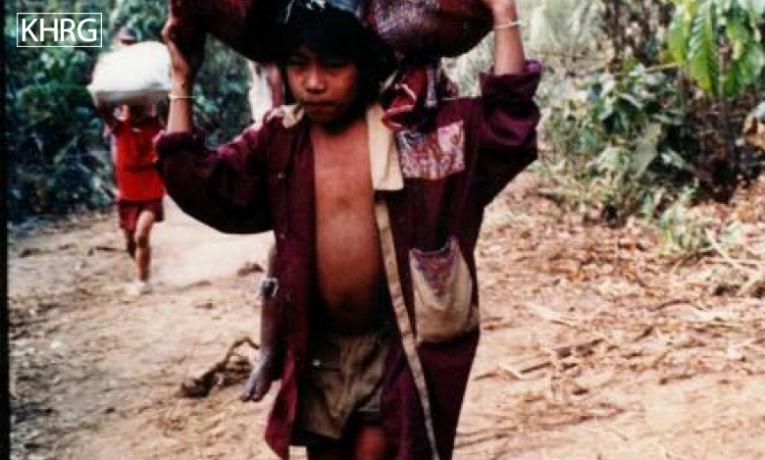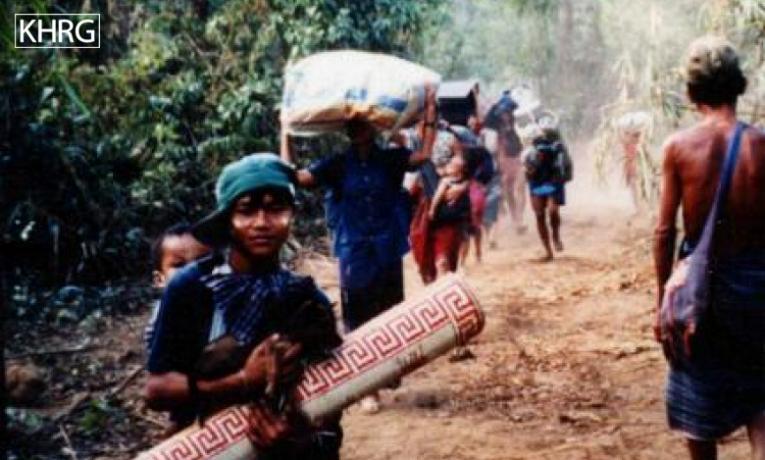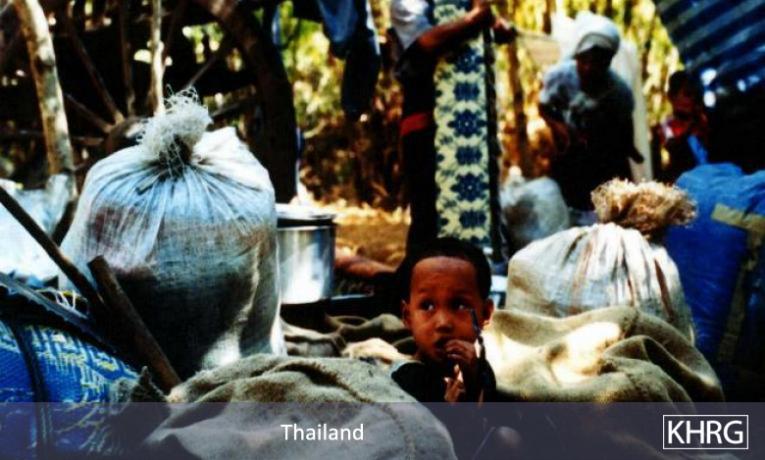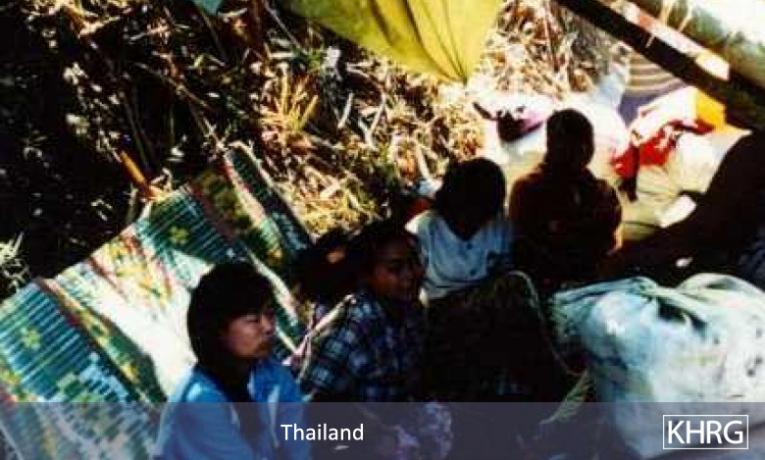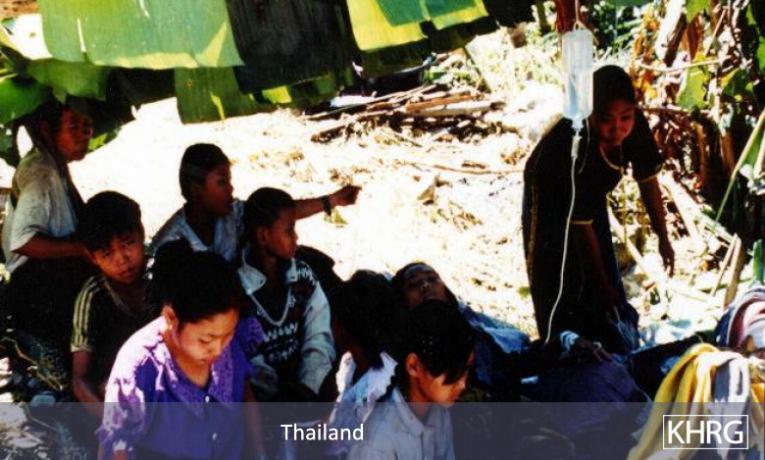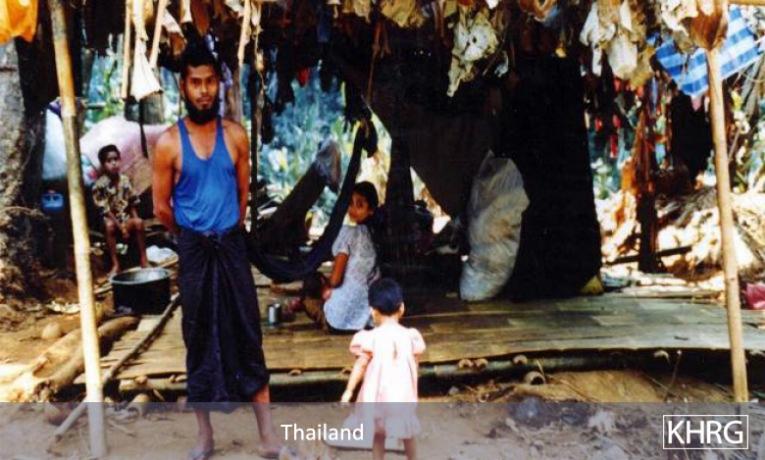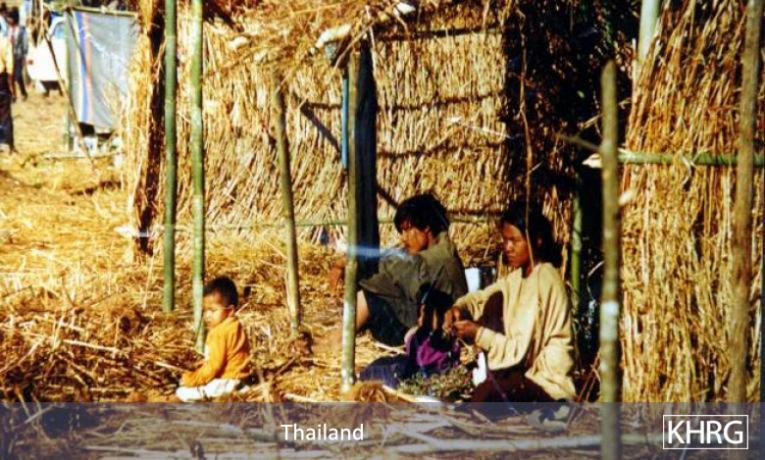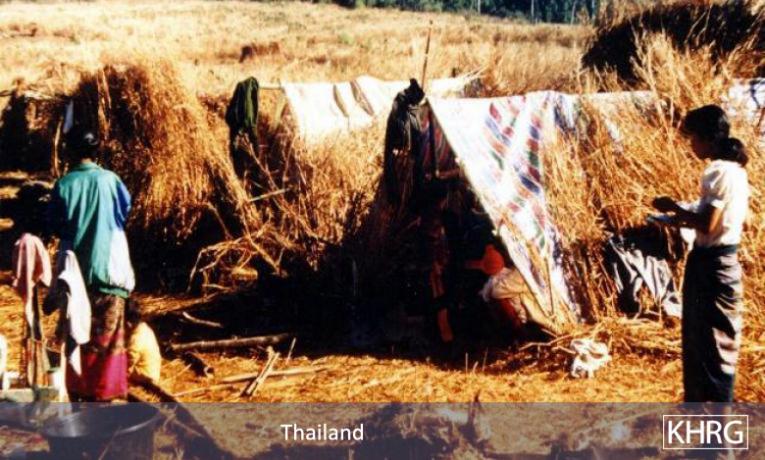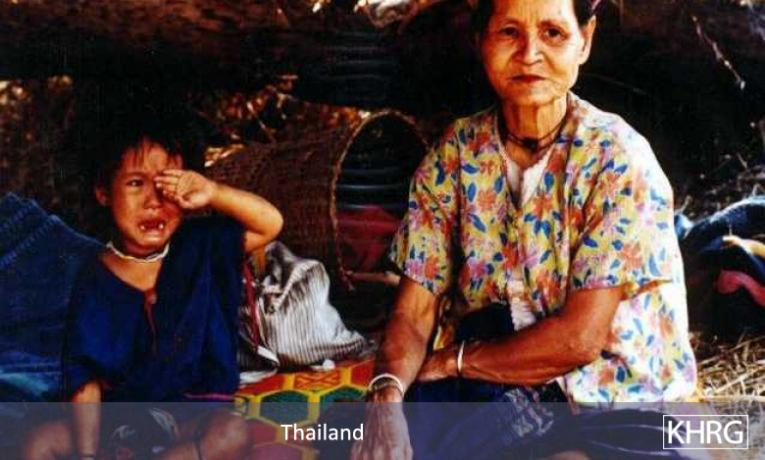This document gives descriptions for Photo Set 97-A, including refugees from the current Dooplaya and Tenasserim offensives.
Peoples’ names given here correspond to those used in the reports; names which have been changed to protect people are enclosed in quotes. Some details have been omitted from the photo descriptions to protect the people involved. These photos may be used in any way to help the people of Burma.
Some abbreviations used in the photo descriptions:
SLORC = State Law & Order Restoration Council, Burma’s military junta
DKBA = Democratic Kayin (Karen) Buddhist Army, Karen group allied to SLORC
KNU = Karen National Union, main Karen opposition organization
KNLA = Karen National Liberation Army, army of the KNU
KNPP = Karenni National Progressive Party, Karenni organization which is still fighting SLORC.
In February 1997 SLORC launched a mass offensive against Karen-held regions in Dooplaya District, otherwise known as KNLA 6th Brigade area. They managed to capture almost all Karen-held territory in the area with amazing speed, within only 1-2 weeks. At least 10,000 new Karen refugees streamed across the Thai border before SLORC troops occupied their villages, but many more were trapped inside by the lightning speed of the offensive and many families were split. Now that the fighting has stopped, more refugees continue to arrive fleeing forced labour and other abuses which are beginning throughout the newly-occupied region. All photos relate to the report "Refugees from SLORC Occupation" (‘Offensives’).
Photos #96-101: Karen villagers run for their lives with whatever they can carry across the Thai border in mid-February. The main SLORC attacking force was only half an hour’s walk distant when these photos were taken. The villagers were fleeing from villages throughout the Lay Po Hta-Saw Hta (Azin)-Kyaikdon plain and crossing the Thai border at Lay Po Hta. As these villagers ran, distant mortar explosions were audible from Kwih Kler and Meh Tharoh Hta, an hour’s walk away. 30 minutes later, SLORC troops began shelling Lay Po Hta, just 15 minutes’ walk away. [Photos: KHRG]
Photos #102-03: Just 5 minutes into Thailand these new refugees hide in the forest for a rest, not knowing where to go next. [Photos: KHRG]
Photo #104: This 60-year-old woman was the last villager to come through Lay Po Hta. She had been walking alone all day until late afternoon from her village, and sweat was running down her face. On meeting a KHRG researcher, all she could say was, "Are there people ahead? Is it far?" SLORC was only half an hours’ walk further back. [Photo: KHRG]
Photo #105: The Karen village of Lay Po Hta, which also acted as a refugee camp though it is not in Thailand, after the last villagers had evacuated and passed through. Ten minutes after this photo was taken, the main SLORC attack force began shelling the western end of the village with mortars. The next day they occupied it, and they have since set up a main base there where captured villagers have been seen doing forced labour as porters. [Photo: KHRG]
Photo #106: Villagers fleeing to Thailand through Meh Tharoh Kee, after SLORC had occupied the area. [Photo: KHRG]
Photo #107: Telekoo refugee from southern Dooplaya District. The Telekoo are a strict religious sect, believing in a second Buddha, practising quite differently from other Buddhists, and leading a religiously disciplined lifestyle. Other Karens attribute them with spiritual powers such as the ability to read minds. The Telekoo are quite prevalent in the area. 1,500 of them fled across the border in Lay Taw Ku area alone - then SLORC and DKBA occupied their villages and sent a message across the border that they would burn down Telekoo villages in Thailand if the refugees were not forced back. Several hundred returned to Burma, while the others fled over the hills further into Thailand. [Photo: KHRG]
Photos #108-11: Newly-arrived Karen refugees camped along the roadsides and in the drainage gutters at Ka Hee Pa Leh in Thailand in mid-February. About 6,000 new refugees were camped along the road. Thai authorities would not let them build shelters away from the dusty, heavily-trafficked road, and would not let them move into the new refugee camp at Nu Po until a month later. [Photos: KHRG]
Photos #112-16: After plastic sheeting began to arrive from overseas NGOs, the refugees became more ‘established’ along the roadsides at Ka Hee Pa Leh. However, thousands more were still arriving. [Photos: KHRG]
Photo #117: Woman who had just crossed the border into Thailand after crossing the mountains and hiding in the forest for several days after the SLORC occupation. She gave birth to this baby girl 2 days earlier while in hiding in the forest. When asked what she would name her daughter, she answered: "Name? She was born in the wilderness, so her name is ‘Naw Wilderness’ [Naw Keh Klah]." [Photo: KHRG]
Photos #118-19: Some of the over 1,000 Muslim refugees who fled Dooplaya District and were camped at Ka Hee Pa Leh. The Thai authorities immediately ordered them to move 1 km. up the road closer to the SLORC and separate from the Karen, claiming that "Muslims are troublemakers". [Photos: KHRG]
Photos #120-23: Karen refugees from the area further north around Dta Law Thaw (Sakan Thit) and Kyo G’Lee, who fled to the Thai Karen village of Klaw Taw and were then pushed back into this field by Thai authorities, just 3 km. from SLORC and DKBA forces in Dta Law Thaw. These refugees later moved to the new refugee camp at Nu Po. [Photos: KHRG]
Photos #124-25: Karen refugees who crossed the border at Htee Sgaw Sghi at the end of February and were among hundreds camped out in farm fields waiting to be allowed to move into the new refugee camp. The woman in the first photo had just given birth to this baby the day before in this straw shelter. [Photos: KHRG]
Photo #126: Villager who stayed in his village during the SLORC occupation, only to flee later, showing how he was beaten in the face by SLORC troops. [Photo: KHRG]
Photos #127-31: The remains of Meh Tharoh Kee village, which also served as a refugee camp though it is not in Thailand. SLORC troops occupied the village, formerly home to 2,745 people, and burned all of it to the ground before withdrawing to the nearest ridgetop. In the process they also burned down part of a village on the Thai side of the border, with no protest from Thai authorities. [Photos: KHRG]




